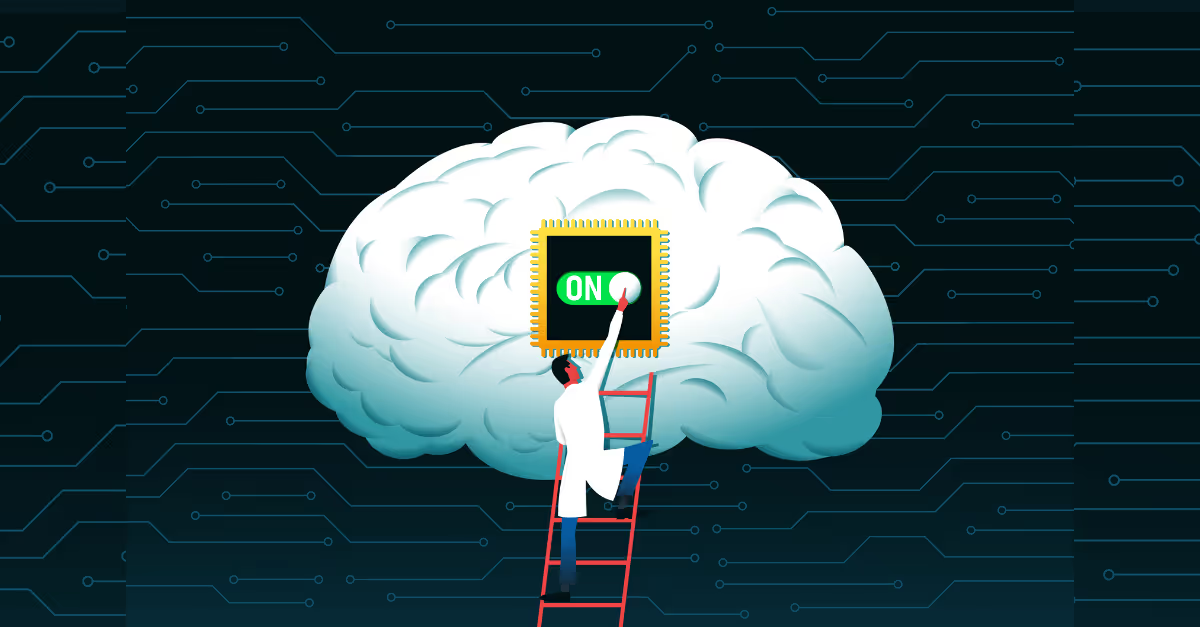How to activate data + AI for marketing use cases
Times are changing fast these days. The pace of innovation and transformation is hard to keep up with. Some say we’re in the midst of a Fourth Industrial Revolution - where AI, robotics, and the Internet of Things are transforming everything we do. Marketing, specifically, is an area of business that is subject to these changes.
Marketing is no longer just about crafting appealing messages; it's about harnessing data and technology to engage customers more deeply than ever before. The digital transformation has catapulted marketing into new realms that intersect with customer service, sales, revenue operations, and more. This shift expands the scope of marketing from mere brand promotion to a comprehensive custodian of the customer journey, ensuring that every touchpoint is an opportunity for engagement and conversion.
As we navigate this fast-changing reality, marketers must adapt to remain effective, leveraging the latest tools to create strategies that are as dynamic as the markets they operate in.
How is AI changing the marketing landscape?
Two years ago, every marketer was talking about “data-driven marketing”.
Today, it’s all about AI-driven marketing… Things move fast.
There’s no denying that AI is fundamentally transforming the marketing landscape by introducing new capabilities that make your marketing team more targeted, efficient, and impactful. The integration of AI into marketing strategies is reshaping how your brand engages with customers, analyses data, and optimises campaigns for better performance.
There’s also no doubt that the role of a marketer in the organisation will change. The shift from “creators” to “editors” is already very clearly happening. Let AI do the legwork, and marketing will polish things up before publication.
What is data + AI Activation for marketing?
Data + AI activation for marketing aims to leverage your company data and artificial intelligence to improve your marketing strategies and initiatives - mainly through personalisation and increased efficiency.
By integrating data from various sources, your organisation can use AI to analyse patterns and predict customer behaviour. This allows your marketing team to tailor its efforts to individual preferences and needs of customers and prospects - resulting in a more personalised and tailored customer experience with your brand.
In terms of increased efficiency, AI-driven tools help automate repetitive marketing tasks, optimise campaign performance in real-time, and provide actionable insights that guide decision-making processes.
This approach not only aims to improve customer engagement through targeted communications and recommendations, but also streamlines your marketing engine.
How can marketing benefit from Data + AI Activation?
Data-driven marketing is all about connecting the right dots across the customer journey and marketing funnel, to make better decisions.
Data + AI Activation takes it to the next level. You’re still connecting the right dots, centralising the data into one place like Salesforce Data Cloud or Snowflake, but immediately use that data to trigger actions, workflows and other actions that enhance your entire marketing engine.
This brings the marketing team a variety of benefits including:
Centralised, unified marketing data
AI-driven marketing - just like data-driven marketing - relies on trustworthy, accurate, actionable data. A major challenge for many companies today, however, is that the data is often spread across multiple platforms and systems that aren’t connected.
A Data + AI Activation strategy requires a unified approach to data, where data is stored and centralised in a single location. This “single source of truth” is what will power your AI-driven marketing actions like campaigns, content creation, and customer touchpoints.
Enhanced personalisation and customer experiences:
Data and AI allow for deep personalization at scale. By analysing customer data, AI can understand individual preferences and behaviours, enabling marketers to tailor content, products, and services to meet the specific needs of each customer. This level of personalization leads to higher engagement rates, increased customer satisfaction, and improved loyalty.
By integrating AI with customer data, marketers can create seamless customer journeys. AI can help identify potential pain points and automatically suggest improvements or alternative customer touchpoints, enhancing the overall customer experience and supporting customer retention.
Content creation & optimisation
AI can automate repetitive and time-consuming tasks such as A/B testing, email marketing, and customer segmentation. Automation not only reduces the workload on human marketers but also speeds up processes and reduces human error, allowing teams to focus on more creative and strategic tasks.
AI tools can also assist in content creation and optimization, suggesting topics likely to engage customers, optimising headlines for better click-through rates, and even generating content that adheres to SEO best practices.
Data + AI Activation for Marketing: Use Cases
Use Case 1: Lower cost per conversion with targeted advertising
Business Goal: Acquire new customers
Marketing Challenge: Improve targeted marketing campaign performance
Marketing Objective: Lower the cost per conversion to align with customer acquisition cost (CAC) targets
When your digital marketing campaigns are underperforming, it’s usually one - or a combination - of the following things: The ad creatives, the content you’re advertising, or the audience you're targeting.
Targeting, I would argue, is the most important aspect of them all. You can generate the world’s best content, with brilliant ads - but point it towards the wrong audience, and you’ll still end up with poor performance.
Nailing your audience segmentation strategy is the first and most important key step.
With CDPs or tools like Salesforce Data Cloud in place, your marketing team has access to your entire customer and contact database - which can offer a streamlined approach to identifying, building and expanding the right target audiences for a campaign.
Activating data + AI:
With data centralised in a single source of truth, your marketing team can leverage AI to easily define and refine audience segments based on existing customer data. To find audiences outside of the existing customer database that have similar traits and behaviours, your marketing team can deploy AI-powered lookalike modelling from ad platforms like Google, Meta, Linkedin, etc to expand the reach of your campaign.
Once your target audiences are defined, refined and enriched with lookalike modelling, the next step is to activate that data on the preferred advertising platforms like Google, Linkedin, Meta or other channels where you might be running campaigns.
With the delivery of personalised ads to carefully curated audiences, chances are very likely you’ll see your conversion rates go up, without having to spend additional budget on the campaign itself - resulting in a lowered cost per conversion.
You could even leverage data + AI to lower the cost per conversion even further… That’s where the other key steps come into play: ad creatives and the campaign’s content. From ad copy to design, landing page experience to calls to action, AI can help your team run multiple versions of your campaign with faster and better A/B testing - allowing you to identify what assets drive the best performance against your cost-per-conversion KPI.
Use Case 2: Increase conversion rates across entire customer journey
Business Goal: Improve customer acquisition & retention rates
Marketing Challenge: Optimise & personalise the entire customer journey
Marketing Objective: Improve customer experience across the funnel
As mentioned before, the marketing funnel doesn’t stop at generating a conversion (leads, direct purchases, …). It covers the entire funnel and buyer journey: from awareness to loyalty.
Today, many marketers face the challenge of not having real-time access to their data, which limits their ability to effectively personalise customer journeys - which ultimately affects pipeline and conversion rates.
Activating data + AI
By leveraging AI tools and unlocking data from various sources, your marketers can craft personalised experiences tailored to the unique preferences and behaviours of each customer. This strategic approach not only boosts conversion rates but also enhances customer lifetime value (CLTV) and supports sales with more effective upselling and cross-selling by recommending relevant offers.
This process begins by accessing and unlocking data, which enables your marketers to enhance web personalisation and create connected customer journeys with a comprehensive view of customer engagement.
Similar to the use case above, AI can play a crucial role in understanding the highest value segments and predicting their response to promotions, thereby driving personalised web experiences and strategic campaign planning.
The subsequent steps involve activating these insights by segmenting high-value audiences, avoiding marketing oversaturation, and ensuring tailored recommendations are synchronised across all customer touchpoints including third-party systems.
This orchestration helps in moving customers towards conversion, while real-time notifications keep sales and marketing teams informed of customer progress, allowing for timely interventions to optimise campaign outcomes and drive conversions effectively.
Use Case 3: Empowering account-based plays
Business Goal: Improve customer lifetime value of top customers
Marketing Challenge: Run coordinated Sales & Marketing efforts to drive revenue
Marketing Objective: Support sales in cross-& upsell at key accounts
If you’re in B2B, data + AI activation can play a pivotal role in empowering marketing teams to support sales teams through targeted account-based marketing (ABM) and sales motions. By leveraging the combined strengths of data analytics and artificial intelligence, your business can execute more precise and effective ABM strategies that directly contribute to sales success.
First of all, AI tools can provide real-time insights into customer behaviour and market conditions, allowing your marketing and sales teams to adapt their strategies dynamically. For instance, if an AI model notices a change in the engagement level of a key account or a shift in market trends, it can immediately alert the right team in their flow of work and suggest adjustments to the ABM approach.
This agility ensures that both marketing and sales are always aligned with the current environment and can capitalise on emerging opportunities.
Activating data + AI
The first step of any great ABM plan is to identify and prioritise the right accounts. Here, data + AI activation helps your marketing and sales teams identify and prioritise high-value accounts with greater accuracy.
AI algorithms can analyse historical sales data, customer interactions, and industry trends to score and rank potential accounts based on their likelihood to convert or expand. This prioritisation enables your sales teams to focus their efforts on accounts that are most likely to yield significant returns, optimising their time and resources.
With a list of priority accounts for sales, your marketing team can leverage AI to craft highly personalised marketing campaigns tailored to the specific needs and pain points of each account. This can include personalised emails, customised content, and targeted messaging that resonates with the key decision-makers within an account.
Such personalised engagement increases the relevance and impact of marketing efforts, making it easier for sales teams to initiate conversations and build relationships based on demonstrated understanding and value proposition.
This fosters closer alignment and coordination between your marketing and sales teams. By sharing data and insights across teams, AI helps ensure that all actions are based on a unified understanding of each account's status and potential.
This coordination is critical in ABM, where seamless interaction and consistent messaging across touchpoints are essential for nurturing leads and closing deals.
Conclusion
As we look ahead, the future of marketing in this data-driven, AI-enhanced landscape is promising yet challenging. The integration of AI into marketing workflows isn’t just a trend; it’s a fundamental shift in how you approach the market and engage with your customers. It demands a new set of skills and a new mindset from marketers: one that blends the analytical with the creative, and the strategic with the technological.
Embracing AI and data isn't just about keeping up with the competition; it’s about setting the pace and leading the charge in transformation. Marketers must evolve from being creators to becoming editors in complex customer journeys, where every touchpoint is optimised, every campaign is personalised, and every customer interaction is an opportunity to deliver value.
As you harness the power of AI and data, you unlock the potential to not only predict customer behaviour but also to shape it, creating more meaningful interactions and building lasting relationships.
























